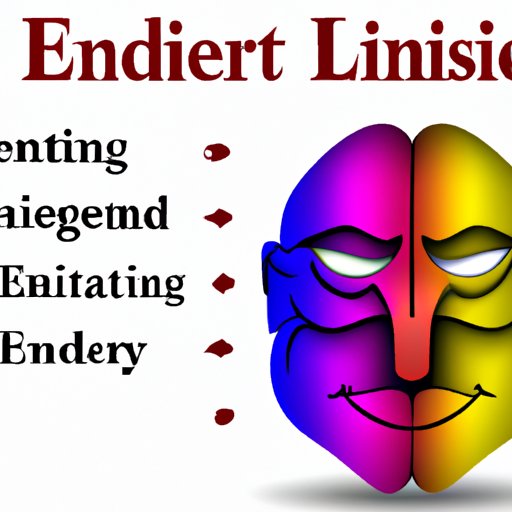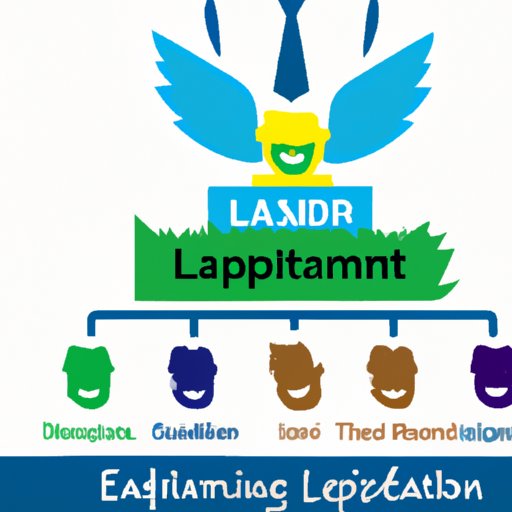Introduction
A leadership style is a leader’s behavior that influences the way his or her team members interact and work together. It is the manner in which a leader provides direction, implements plans, and motivates people. A successful leader has the ability to adapt their style to the situation at hand, utilizing the most appropriate approach for each specific context.
In order to identify the best leadership style for your organization, it is important to understand the different types of styles available, as well as their respective pros and cons. This article will explore what is a leadership style, examining different types of leadership styles, their pros and cons, the impact of leadership styles on organizational performance, the role of emotional intelligence in leadership, and the relationship between leadership styles and employee engagement.

Identifying Different Types of Leadership Styles
There are five main types of leadership styles: autocratic, democratic, laissez-faire, charismatic, and transformational. Each style has its own advantages and disadvantages, and the best style to use depends on the situation and the needs of the organization.
Autocratic
The autocratic leadership style is characterized by a single leader who makes all the decisions without consulting their team. This type of leadership is often seen in military settings, where quick decisions need to be made and there is little time for discussion.
Democratic
The democratic leadership style involves a leader who encourages participation from their team members and values their opinions. This type of leadership is beneficial when making complex decisions that require input from multiple perspectives.
Laissez-faire
The laissez-faire leadership style is one in which the leader gives their team members freedom to make their own decisions and manage their own tasks. This type of leadership can be beneficial when the team members are experienced and motivated.
Charismatic
The charismatic leadership style is characterized by a leader who is able to inspire and motivate their team through their enthusiasm and passion. This type of leadership is often used in situations where morale needs to be boosted or the team needs to be energized.
Transformational
The transformational leadership style is one in which the leader encourages their team members to think creatively and take risks. This type of leadership is beneficial when the organization is looking to innovate and explore new ideas.

Examining the Pros and Cons of Each Leadership Style
Each leadership style has its own advantages and disadvantages, and it is important to consider these when determining the best style for your organization.
Autocratic
The main advantage of autocratic leadership is that it can help ensure quick decision making and effective control. However, this type of leadership can also lead to low morale and decreased motivation among team members.
Democratic
The main advantage of democratic leadership is that it encourages participation from team members and allows for more creative solutions. However, this type of leadership can also lead to slower decision making and less effective control.
Laissez-faire
The main advantage of laissez-faire leadership is that it gives team members autonomy and freedom to make their own decisions. However, this type of leadership can also lead to decreased accountability and lack of direction.
Charismatic
The main advantage of charismatic leadership is that it can help to boost morale and energize a team. However, this type of leadership can also lead to over-reliance on the leader and lack of initiative from team members.
Transformational
The main advantage of transformational leadership is that it encourages creativity and risk taking. However, this type of leadership can also lead to lack of structure and lack of accountability.

How to Determine the Best Leadership Style for Your Organization
When determining the best leadership style for your organization, there are several factors to consider. These include the size of the organization, the culture of the organization, the goals of the organization, and the skills and experience of the team members. It is also important to assess your needs and determine which leadership style will be most beneficial for achieving your goals.
Exploring the Impact of Leadership Styles on Organizational Performance
The way a leader communicates with their team can have a significant impact on the performance of the organization. Effective communication is essential for creating a positive working environment and promoting collaboration. Additionally, leaders should strive to create an atmosphere that encourages innovation and rewards employees for their efforts. Furthermore, leaders should focus on creating an environment that is conducive to employee engagement, as this can have a major impact on overall performance.

Understanding the Role of Emotional Intelligence in Leadership
Emotional intelligence (EI) is an important factor in successful leadership. Studies have shown that EI is strongly correlated with effective leadership, as it allows leaders to be more aware of the emotions of their team members and better able to manage their own emotions. Leaders who possess strong EI skills are better able to communicate effectively, resolve conflicts, and build trust with their team.
Developing EI skills is not easy, but there are some practical strategies that can help. These include practicing active listening, learning how to recognize and manage emotions, and being open to feedback. Additionally, it is important for leaders to develop self-awareness and self-reflection skills, as these can help them better understand their own emotions and reactions.
The Relationship Between Leadership Styles and Employee Engagement
Employee engagement is an important factor in organizational performance, and it is closely linked to the leadership style employed by the leader. The way a leader communicates, motivates, and interacts with their team can have a major impact on how engaged and committed employees feel. Leaders who employ a democratic or transformational leadership style tend to have higher levels of employee engagement, as these styles encourage collaboration and innovation, foster a sense of ownership, and give employees a greater sense of autonomy.
Assessing the Effectiveness of Leadership Styles in Different Contexts
The effectiveness of a leadership style can vary depending on the context. For example, an autocratic leadership style might be effective in a fast-paced military setting, but it may not be ideal for a team that is focused on innovation and creativity. Similarly, a laissez-faire leadership style might be effective for a highly experienced and motivated team, but it could lead to lack of direction and accountability in a less experienced team. It is important for leaders to assess the context and determine the most appropriate leadership style for the situation.
Conclusion
Leadership styles play an important role in organizational performance, and it is important for leaders to understand the different types of styles and their respective pros and cons. Additionally, the impact of a leader’s communication style, emotional intelligence, and employee engagement should not be overlooked. Leaders should strive to assess the context and determine the most appropriate leadership style for the situation. By understanding the different types of leadership styles and their respective strengths and weaknesses, leaders can increase the likelihood of success for their organizations.
Summary of Key Points
• There are five main types of leadership styles: autocratic, democratic, laissez-faire, charismatic, and transformational.
• Each style has its own advantages and disadvantages, and the best style to use depends on the situation and the needs of the organization.
• Communication style, emotional intelligence, and employee engagement can all have a major impact on organizational performance.
• Leaders should strive to assess the context and determine the most appropriate leadership style for the situation.
Final Thoughts
Leadership styles can have a significant impact on organizational performance, and it is important for leaders to understand the different types of styles and their respective pros and cons. By assessing the context and determining the most appropriate leadership style for the situation, leaders can increase the likelihood of success for their organizations.
(Note: Is this article not meeting your expectations? Do you have knowledge or insights to share? Unlock new opportunities and expand your reach by joining our authors team. Click Registration to join us and share your expertise with our readers.)
